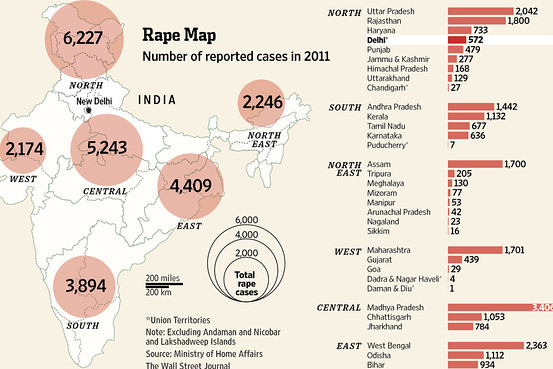Punjab shame piles on: Gang-raped and dumped, nurse critical
BATHINDA: Even before the memories of Patiala gang rape and suicide case fade, another abduction and gang-rape of a 26-year-old nurse, who was in Chandigarh to attend a job interview, shocked Punjab on Sunday.
In an observation in the Patiala gang rape and suicide case, the Punjab and Haryana high court last month had made scathing criticism of the state of affairs in Punjab, saying there is need to combat the 'rape culture' in the state. However, the 'rape culture' seems to be continuing in the state.
In the latest case, the nurse from Landeke village in Moga district was thrown out by the rapists from a car on Bathinda-Dabawali road on Sunday evening, two days after her abduction. The girl, who had completed her nursing course from Mata Sahib Kaur College in Gidderbaha in 2007, is battling for life at Bathinda civil hospital now.
According to a statement given to Bathinda's Rama Mandi police station SHO Paramjeet Singh, the girl, who had been looking for a job, was informed by one of her friends that there was a vacancy at a Sector 34 hospital in Chandigarh.
She took a bus to Chandigarh on Friday morning and got down at Sector 43 bus terminal when an unknown person came to her asking for an address. Before she could utter a word, the girl was dragged into a car in which another woman and a man were seated. They gagged her and the trio injected her with some drug after which she fell unconscious.
When she woke up, she saw four men in a room and one of them was filming her in the nude. When she screamed, he injected her with another dose of some drug. The girl alleged that she was gang-raped by the men. On Sunday morning, she was dragged into a car in a semi-conscious condition by the gang. Later, the girl was thrown out of the vehicle around 5.30pm on Sunday near Rama Mandi area on Bathinda-Dabawali road.
A car driver, Rohitas Kumar of Kular village in Abohar district, spotted the girl in a serious condition and admitted her to the civil hospital in Bathinda.
The police have registered a case and a hunt is on for the culprits, said Gurmeet Singh Kingra, DSP, Bathinda.
Doctor Poonam Dhillon of the civil hospital has conducted a medical examination of the girl and confirmed that the girl was gang-raped.
On December 26, a minor girl had ended her life in Patiala after the cops failed to take action against those who violated her.
http://timesofindia.indiatimes.com/...umped-nurse-critical/articleshow/18108965.cms
Last edited by a moderator:



